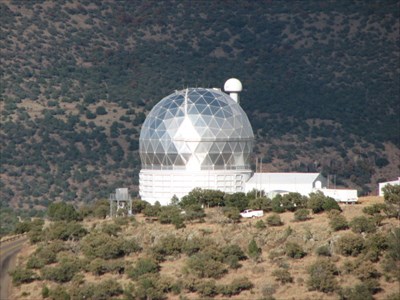McDonald Observatory is located in the Davis Mountains of West Texas which provide excellent conditions for astronomical research with some of the darkest and clearest night skies anywhere.
It is associated with the University of Texas at Austin, working closely with the astronomy department. The observatory also produces StarDate, a daily syndicated radio astronomy segment that airs on more than 360 stations throughout the United States.
Currently, the observatory operates four research telescopes:
The 360" Hobby-Eberly Telescope
The 107" Harlan J. Smith Telescope
The 82" Otto Struve Telescope
The 30" large format imaging telescope
The Otto Struve Telescope and the Harlan J. Smith Telescope are located on the same peak, Mount Locke, while the Hobby-Eberly Telescope is located a short distance away on the summit of Mount Fowlkes.
It owes its existence to a reclusive Texas banker, William Johnson McDonald (1844–1926), who left a sizable fortune to the University of Texas to establish an astronomical observatory. Its first telescope, the 82" Otto Struve Telescope was dedicated on May 5, 1939, and was at that time, the second largest in the world. Initially the University had no Department of Astronomy, so the telescope was originally operated by the University of Chicago.
Its next telescope was the 107" Harlan J. Smith Telescope, third largest in the world when completed in 1969. This telescope was built by means of a joint contract between NASA and the University, in part to serve as "eyes" on the solar system at the dawning of the Space Age, because powerful telescopes needed to examine the planets first in order to plan the new spacecraft's missions to explore them. Currently it is used for a full range of astronomical research.
The Observatories third telescope has a unique history, being a sort of kissing cousin to the just mentioned Harlan J. Smith Telescope. When the large Harlan J. Smith Telescope was completed in the late 1960s, a central hole was cut out of the fused silica mirror. This hole is necessary to allow incoming light to travel into its science instruments, but it also wastes a large piece of very expense glass. Instead of disposing of it, the McDonald Observatory decided to use it. Half of this glass was used to create the mirror blanks for the 8" Telescope. The mirror weighed over 250 pounds and was set in a tube that was almost eight feet long and housed in a dome that is 20 feet wide, a task that was completed in 1970.
The Observatory's newest telescope, the 433-inch Hobby-Eberly Telescope, one of the world's largest optical telescopes, was designed specifically for spectroscopy making it ideal for searching for planets around other stars, studying distant galaxies, exploding stars and black holes. The telescope has a unique design, consisting of 91 hexagonal mirrors resulting in a telescope that looks more like a honeycomb than an instrument designed to search the sky. This telescope, dedicated in 1997 currently ranks as the fourth largest telescope in the world.
As part of the McDonald bequest, was a request that it be used not only for the study of astronomical science, also for its promotion, something that University has engaged in from the very beginning, growing to the point the number of visitors to Observatory is now over 100,000 annually. This public outreach and education program is centered around the Frank N. Bash Visitors Center. Besides the fore mentioned StarDate radio program, they conduct daily tours of the research facilities and solar viewing programs and evening "Star Parties", which are evening/nighttime viewing programs using both the unaided eye and telescopes.
The Public Observatory, dedicated in 1988, has a Meade Instruments 16" LX-200 telescope and a 22" classical cassegrain telescope, each housed in a 20' dome. Additional telescopes include a 22" Newtonian telescope, an 8" fixed eyepiece scope, and 8" reflectors commercially available from Celestron and Meade.
The Observatory is truly a world class facility both for the visitor and especially for the researcher, one of those little gems that most people don't know about, but those either visit, use for research purposes, or work there, certainly cherish. This waymarker has been to the Observatory several times and can certainly testify to what an awesome facility it is, especially from the visitors point of view.
There are two excellent links to the Observatory, the first is the main website which has a wealth of information, remember-one of their purposes is to provide public outreach, and can be found
here. The second is for the University of Texas Astronomy Department which can be found
here.
We are sky watchers, not into astronomy, but having been part of a solar viewing and having taken a tour during one of our daytime visits to the Observatory, it has whetted our appetite to the point that our next visit will be on one days they conduct the evening programs, giving us a whole different look at the sky.
View of the Struve and Smith Telescopes
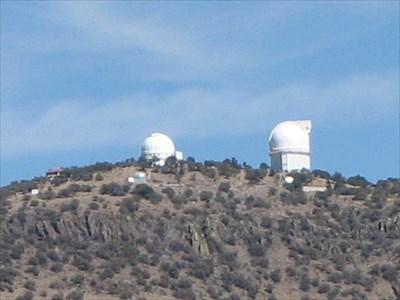
The signs at the entrance leave no doubt as to the purpose of this facility.
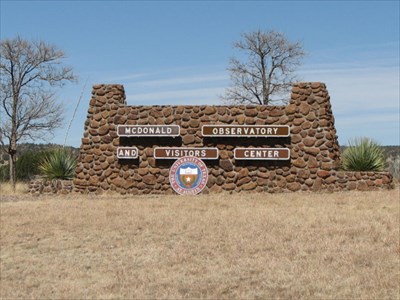
The Visitors Center with one of the visitor telescopes behind it and the Struve and Smith Telescopes on the top of the peak.
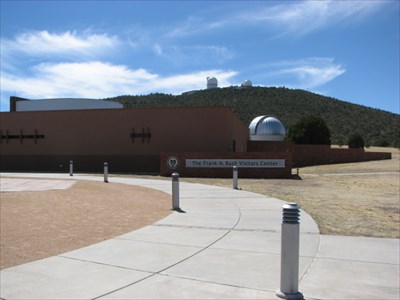
The Star Date Cafe inside the visitors center. There is also a interactive science hall and an auditorium where the visitor programs begin in this building.
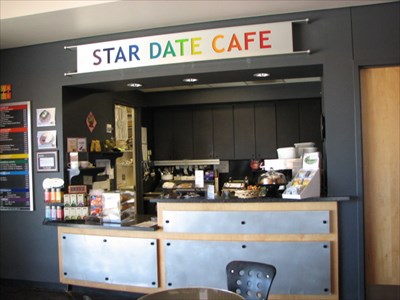
The entrance to the Struve Telescope
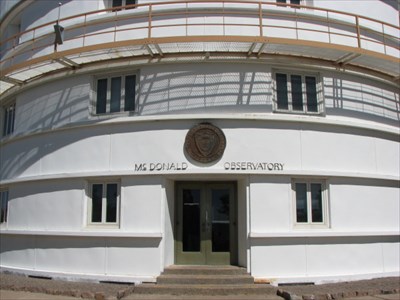
Closeup of the Smith Telescope.
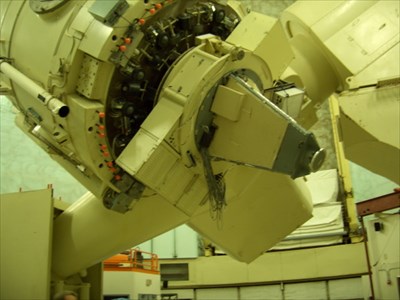
Hobby-Eberly Dome.
